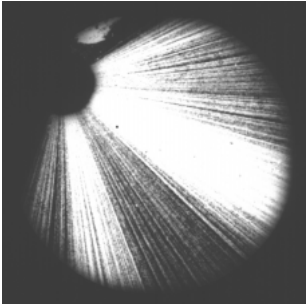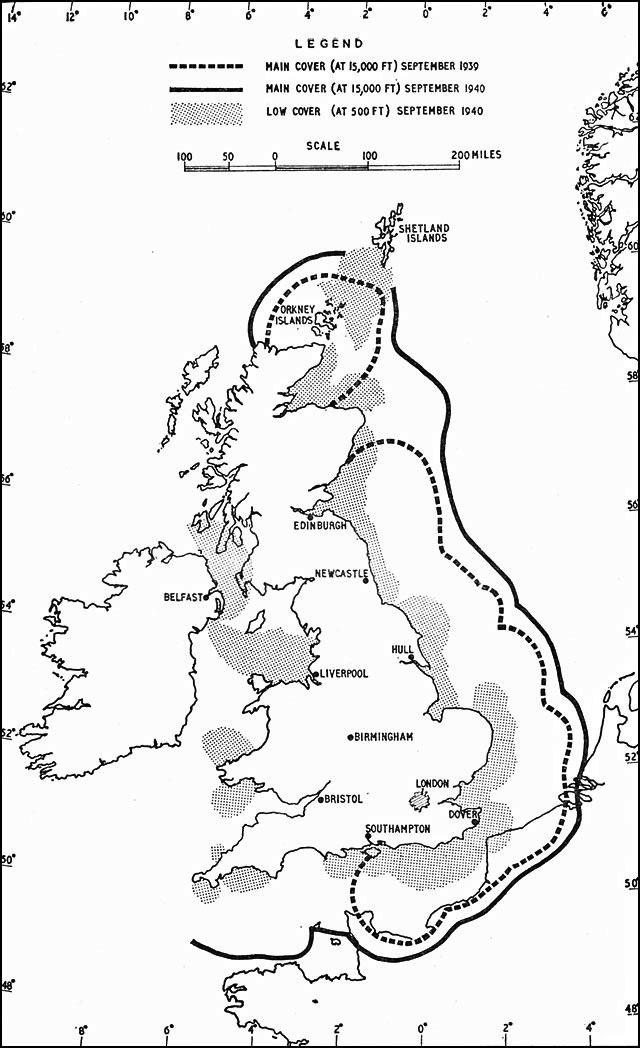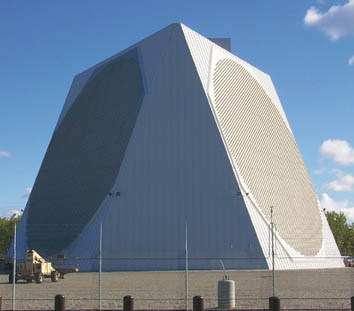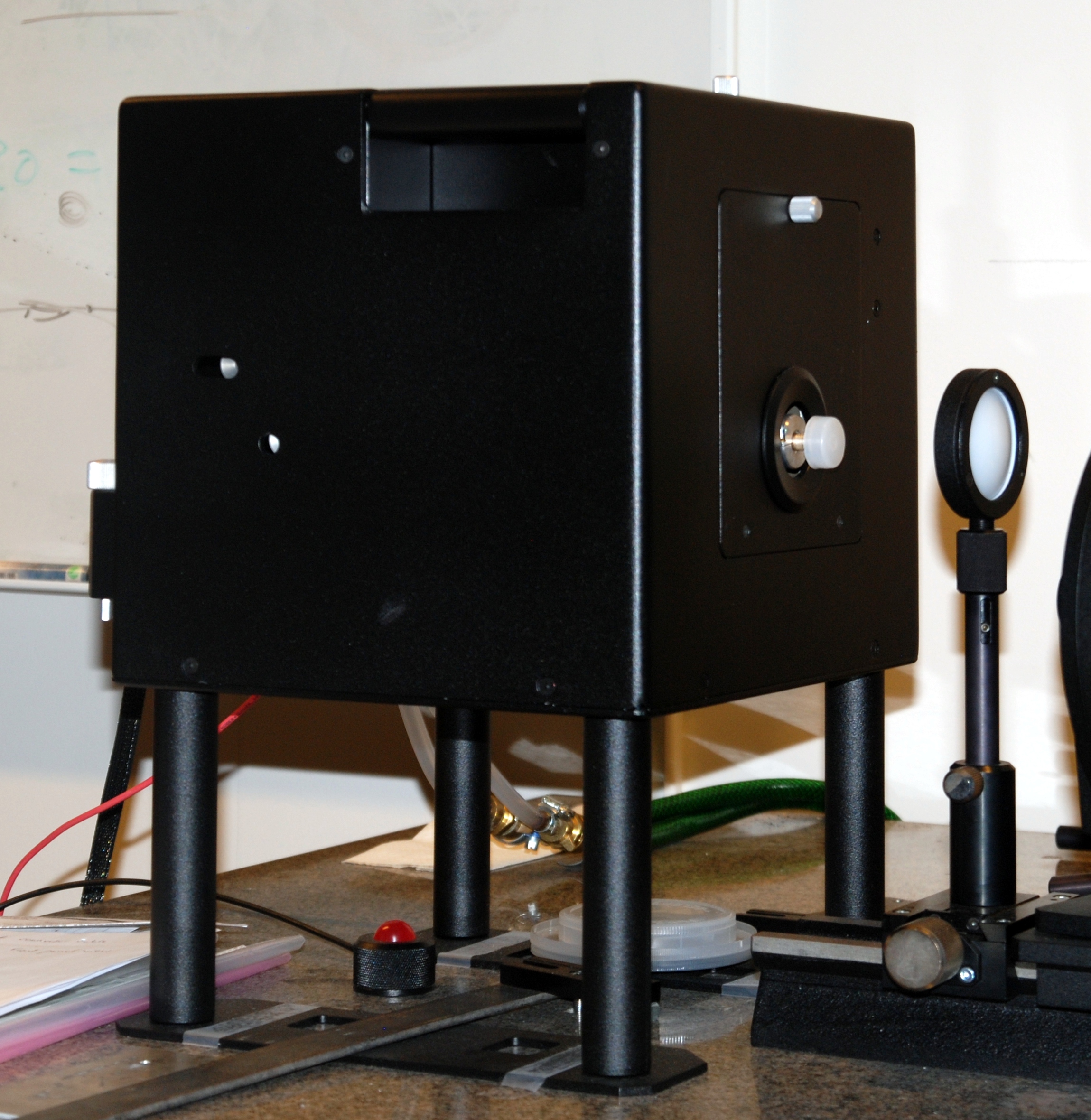|
ROTOR
ROTOR was an elaborate air defence radar system built by the British Government in the early 1950s to counter possible attack by Soviet bombers. To get it operational as quickly as possible, it was initially made up primarily of WWII-era systems, notably the original Chain Home radars for the early warning role, and the AMES Type 7 for plotting and interception control. Data from these stations was sent to a network of control stations, mostly built underground, using an extensive telephone and telex network. A similar expedient system in the United States was the Lashup Radar Network. ROTOR called for the continual upgrading of the network over time, both the radars and the command and control systems. Among these upgrades was a new microwave frequency radar to replace Chain Home . An experimental system, Green Garlic, was so successful that it began replacing Chain Home starting in 1954. In service, these proved so accurate that they could replace the Type 7 radars as well ... [...More Info...] [...Related Items...] OR: [Wikipedia] [Google] [Baidu] |
Linesman/Mediator
Linesman/Mediator was a dual-purpose civil and military radar network in the United Kingdom between the 1960s and 1984. The military side (Linesman) was replaced by the Improved United Kingdom Air Defence Ground Environment (IUKADGE), while the civilian side (Mediator) became the modern public-private National Air Traffic Services (NATS). In the 1950s, the Royal Air Force was installing a radar network known as ROTOR using World War II, war-era radars like Chain Home along with new command centres. A new radar, the AMES Type 80, replaced all of the ROTOR radars and command centres with a series of nine Master Control Radars and a number of associated secondary radars. While these installations were in progress in the early 1950s, Compagnie générale de la télégraphie sans fil, CSF introduced the carcinotron, which could output a radio signal at any desired frequency. This made it a very effective Radar jamming and deception, jamming system, and it appeared to render ground-bas ... [...More Info...] [...Related Items...] OR: [Wikipedia] [Google] [Baidu] |
Chain Home
Chain Home, or CH for short, was the codename for the ring of coastal early warning radar stations built by the Royal Air Force (RAF) before and during the Second World War to detect and track aircraft. Initially known as RDF, and given the official name Air Ministry Experimental Station Type 1 ( AMES Type 1) in 1940, the radar units were also known as Chain Home for most of their life. Chain Home was the first early warning radar network in the world and the first military radar system to reach operational status. Its effect on the war made it one of the most powerful systems of what became known as the "Wizard War". In late 1934, the Tizard Committee asked radio expert Robert Watson-Watt to comment on the repeated claims of radio death rays and reports suggesting Germany had built some sort of radio weapon. His assistant, Arnold Wilkins, demonstrated that a death ray was impossible but suggested radio could be used for long-range detection. In February 1935, a successful d ... [...More Info...] [...Related Items...] OR: [Wikipedia] [Google] [Baidu] |
AMES Type 7
The Air Ministry Experimental Station, AMES Type 7, also known as the Final GCI, was a ground-based radar system introduced during World War II by the Royal Air Force (RAF). The Type 7 was the first truly modern radar used by the Allies, providing a 360 degree view of the airspace around the station out to a distance of about . It allowed fighter interceptions to be plotted directly from the radar display, a concept known as ground controlled intercept, or GCI. Earlier radars, like Chain Home (CH), provided the range and angle to a single target at a time. Arranging an intercept required a complex series of reports from multiple radars that were plotted at a central station, the filter room. In a seminal 1939 memo, Robert Hanbury Brown showed that this Dowding system resulted in an inherent inaccuracy of approximately , and the only way to reduce this would be to arrange the interception directly from the radar screen. He suggested spinning the radar antenna and the cathode ray tub ... [...More Info...] [...Related Items...] OR: [Wikipedia] [Google] [Baidu] |
Ground Controlled Interception
Ground-controlled interception (GCI) is an air defence tactic whereby one or more radar stations or other observational stations are linked to a command communications centre which guides interceptor aircraft to an airborne target. This tactic was pioneered during World War I by the London Air Defence Area organization, which became the Royal Air Force's Dowding system in World War II, the first national-scale system. The ''Luftwaffe'' introduced similar systems during the war, but most other combatants did not suffer the same threat of air attack and did not develop complex systems like these until the Cold War era. Today the term GCI refers to the style of battle direction, but during WWII it also referred to the radars themselves. Specifically, the term was used to describe a new generation of radars that spun on their vertical axis in order to provide a complete 360 degree view of the sky around the station. Previous systems, notably Chain Home (CH), could only be directed al ... [...More Info...] [...Related Items...] OR: [Wikipedia] [Google] [Baidu] |
Ground-controlled Interception
Ground-controlled interception (GCI) is an air defence tactic whereby one or more radar stations or other observational stations are linked to a command communications centre which guides interceptor aircraft to an airborne target. This tactic was pioneered during World War I by the London Air Defence Area organization, which became the Royal Air Force's Dowding system in World War II, the first national-scale system. The ''Luftwaffe'' introduced similar systems during the war, but most other combatants did not suffer the same threat of air attack and did not develop complex systems like these until the Cold War era. Today the term GCI refers to the style of battle direction, but during WWII it also referred to the radars themselves. Specifically, the term was used to describe a new generation of radars that spun on their vertical axis in order to provide a complete 360 degree view of the sky around the station. Previous systems, notably Chain Home (CH), could only be directed ... [...More Info...] [...Related Items...] OR: [Wikipedia] [Google] [Baidu] |
Dowding System
The Dowding system was the world's first wide-area ground-controlled interception network, controlling the airspace across the United Kingdom from northern Scotland to the southern coast of England. It used a widespread dedicated land-line telephone network to rapidly collect information from Chain Home (CH) radar stations and the Royal Observer Corps (ROC) in order to build a single image of the entire UK airspace and then direct defensive interceptor aircraft and anti-aircraft artillery against enemy targets. The system was built by the Royal Air Force just before the start of World War II, and proved decisive in the Battle of Britain. The Dowding system was developed after tests demonstrated problems relaying information to the fighters before it was out of date. Air Chief Marshal Hugh Dowding, commander of RAF Fighter Command, solved the problem through the use of hierarchical reporting chains. Information was sent to Fighter Command Headquarters (FCHQ) central '' filter ro ... [...More Info...] [...Related Items...] OR: [Wikipedia] [Google] [Baidu] |
Chain Home Low
Chain Home Low (CHL) was the name of a British early warning radar system operated by the RAF during World War II. The name refers to CHL's ability to detect aircraft flying at altitudes below the capabilities of the original Chain Home (CH) radars, where most CHL radars were co-located. CHL could reliably detect aircraft flying as low as . The official name was AMES Type 2, referring to the Air Ministry Experimental Station at Bawdsey Manor where it was developed, but this name was almost never used in practice. The system had originally been developed by the British Army's research group, also based at Bawdsey, as a system for detecting enemy shipping in the English Channel. It was built using the electronics being developed for the aircraft interception radar systems, which worked on the 1.5 m band. This high frequency (200 MHz), for the era, allowed it to use smaller antennas that could be swung back and forth to look for returns, in contrast to the enormous fixed ... [...More Info...] [...Related Items...] OR: [Wikipedia] [Google] [Baidu] |
Early Warning Radar
An early-warning radar is any radar system used primarily for the long-range detection of its targets, i.e., allowing defences to be alerted as ''early'' as possible before the intruder reaches its target, giving the air defences the maximum time in which to operate. This contrasts with systems used primarily for tracking or gun laying, which tend to offer shorter ranges but offer much higher accuracy. EW radars tend to share a number of design features that improve their performance in the role. For instance, EW radar typically operates at lower frequencies, and thus longer wavelengths, than other types. This greatly reduces their interaction with rain and snow in the air, and therefore improves their performance in the long-range role where their coverage area will often include precipitation. This also has the side-effect of lowering their optical resolution, but this is not important in this role. Likewise, EW radars often use much lower pulse repetition frequency to maximiz ... [...More Info...] [...Related Items...] OR: [Wikipedia] [Google] [Baidu] |
Carcinotron
A backward wave oscillator (BWO), also called carcinotron or backward wave tube, is a vacuum tube that is used to generate microwaves up to the Terahertz radiation, terahertz range. Belonging to the traveling-wave tube family, it is an electronic oscillator, oscillator with a wide electronic tuning range. An electron gun generates an electron beam that interacts with a slow-wave structure. It sustains the oscillations by propagating a traveling wave backwards against the beam. The generated electromagnetic wave power has its group velocity directed oppositely to the direction of motion of the electrons. The output power is coupled out near the electron gun. It has two main subtypes, the M-type (M-BWO), the most powerful, and the O-type (O-BWO). The output Power (physics), power of the O-type is typically in the range of 1 Watt, mW at 1000 GHz to 50 mW at 200 Hertz, GHz. Carcinotrons are used as powerful and stable microwave sources. Due to the good quality wavefront ... [...More Info...] [...Related Items...] OR: [Wikipedia] [Google] [Baidu] |
Lashup Radar Network
The Lashup Radar Network was a United States Cold War radar netting system for air defense surveillance which followed the post-World War II "five-station radar net" and preceded the "high Priority Permanent System". ROTOR was a similar expedient system in the United Kingdom. Background United States electronic attack warning began with a 1939 networking demonstration at Twin Lights station NJ, and 2 SCR-270 radar stations during the August 1940 " Watertown maneuvers" (NY). When "Pearl Harbor was attacked, here were 8 CONUSearly-warning stations" (ME, NJ, & 6 in CA), and Oahu's Opana Mobile Radar Station had 1 of 6 SCR-270s. CONUS "Army Radar Station" deployments for World War II were primarily for coastal anti-aircraft defense, e.g., L-1 at Oceanside CA, J-23 at Seaside OR ( Tillamook Head), and B-30 at Lompoc CA; and "the AAF...inactivated the aircraft warning network in April 1944." In 1946 the Distant Early Warning Line was "first conceived—and rejected". By 1948 th ... [...More Info...] [...Related Items...] OR: [Wikipedia] [Google] [Baidu] |
Tupolev Tu-4
The Tupolev Tu-4 (; NATO reporting name: Bull) is a piston-engined Soviet Union, Soviet strategic bomber that served the Soviet Air Force from the late 1940s to the mid-1960s. The aircraft was a copy of the American Boeing B-29 Superfortress, having been Reverse engineering, reverse-engineered from seized aircraft that had made emergency landings in the USSR. Design and development Toward the end of World War II, the Soviet Union saw the need for a strategic bombing capability similar to that of the Western Allies. The Soviet VVS air arm had the locally designed Petlyakov Pe-8 four-engined "heavy" in service at the start of the war, but only 93 had been built by the end of the war and the type had become obsolete. The U.S. regularly conducted Air raids on Japan, bombing raids on Japan from distant Pacific forward bases using B-29 Superfortresses. Joseph Stalin ordered the development of a comparable bomber. The U.S. twice refused to supply the Soviet Union with B-29s under Lend ... [...More Info...] [...Related Items...] OR: [Wikipedia] [Google] [Baidu] |
B-29 Superfortress
The Boeing B-29 Superfortress is a retired American four-engined Propeller (aeronautics), propeller-driven heavy bomber, designed by Boeing and flown primarily by the United States during World War II and the Korean War. Named in allusion to its predecessor, the Boeing B-17 Flying Fortress, the Superfortress was designed for high-altitude strategic bomber, strategic bombing, but also excelled in low-altitude night incendiary bombing, and in dropping naval mines to blockade Japan. B-29s dropped the atomic bombings of Hiroshima and Nagasaki, atomic bombs on Hiroshima and Nagasaki, the only aircraft ever to drop nuclear weapons in combat. One of the largest aircraft of World War II, the B-29 was designed with state-of-the-art technology, which included a cabin pressurization, pressurized cabin, dual-wheeled tricycle landing gear, and an analog computer-controlled fire-control system that allowed one gunner and a fire-control officer to direct four remote machine gun turrets. The ... [...More Info...] [...Related Items...] OR: [Wikipedia] [Google] [Baidu] |










